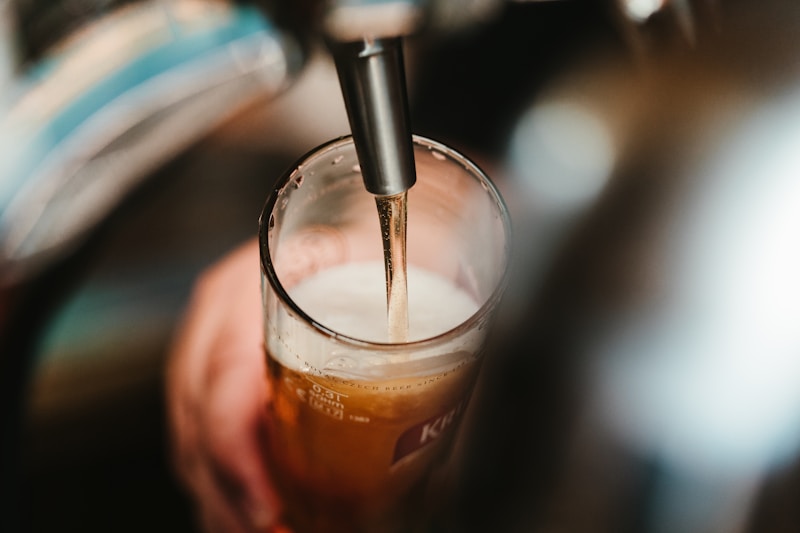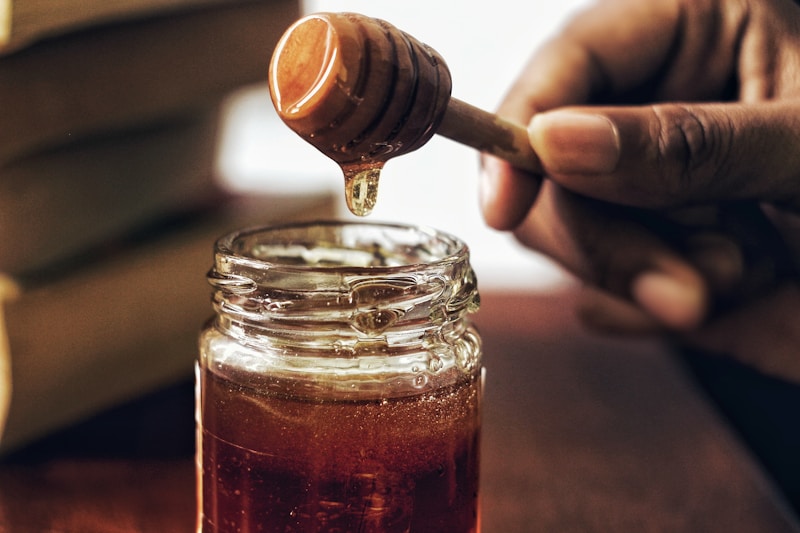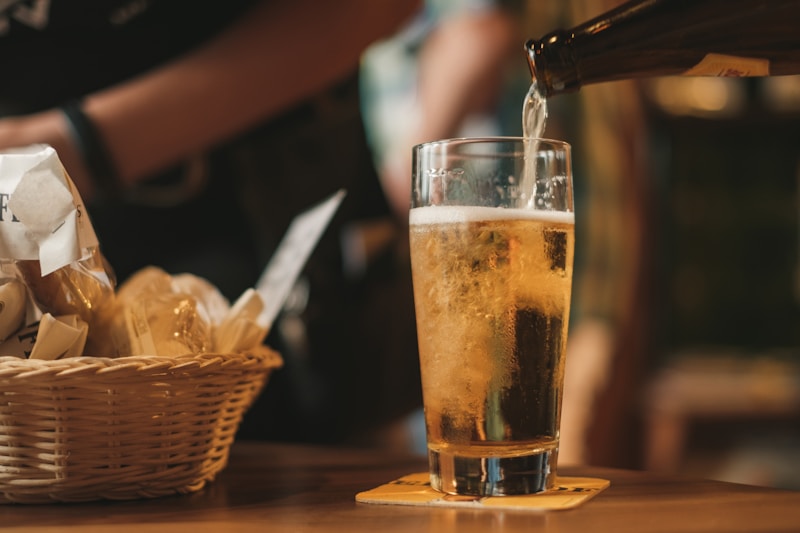In this comprehensive guide, we’ll analyze every major light beer on the market, comparing calories, carbohydrates, alcohol content, and yes—taste. Because what’s the point of saving calories if you’re drinking something that tastes like carbonated water?
The History of Light Beer: How We Got Here

The story of light beer begins in 1967 when biochemist Joseph Owades developed a process to create a reduced-calorie beer for Rheingold Brewery. The original product, called Gablinger’s Diet Beer, was a commercial flop—turns out, men in the 1960s weren’t interested in anything labeled “diet.”
The formula was licensed to Miller Brewing Company, who rebranded it as “Miller Lite” in 1975 with the now-legendary “Tastes Great, Less Filling” campaign. By positioning the beer around its lighter body rather than calorie counting, Miller struck gold. Within a decade, light beer had captured 20% of the American beer market.
Today, light beers represent over 40% of all beer sold in the United States. Bud Light alone sells over 30 million barrels annually, making it the best-selling beer in America by a wide margin. But the light beer category has evolved far beyond Bud Light and Miller Lite—there are now ultra-light options, craft light beers, and everything in between.
Understanding Light Beer Nutrition
Before we dive into brand comparisons, let’s understand what actually makes a light beer “light” and how the nutritional components work together.
Where Do Beer Calories Come From?
Beer calories come from two sources: alcohol and carbohydrates. Alcohol contains 7 calories per gram, while carbohydrates contain 4 calories per gram. In a typical beer:
- A regular 5% ABV beer gets about 60-70% of its calories from alcohol
- The remaining 30-40% comes from residual carbohydrates (unfermented sugars and starches)
This is why simply reducing carbs doesn’t necessarily create a significantly lower-calorie beer—the alcohol itself is caloric. To create a truly “light” beer, brewers must reduce both the alcohol content and the carbohydrates.
The Light Beer Formula
Light beers achieve their reduced calorie counts through several techniques:
- Extended fermentation – Allowing yeast to consume more of the available sugars, reducing residual carbohydrates
- Enzyme additions – Adding enzymes that break down complex carbohydrates into simpler sugars that yeast can ferment
- Lower starting gravity – Using less malt initially, resulting in less alcohol and fewer residual carbs
- Dilution – In some cases, brewing a stronger beer and diluting it with water
The result is a beer with typically 3.5-4.2% ABV (compared to 5% for regular beer) and 3-6 grams of carbohydrates (compared to 13-15 grams for regular beer).
The Complete Light Beer Comparison Chart
Here’s the most comprehensive light beer comparison you’ll find anywhere, organized by calorie count from lowest to highest:
Ultra-Light Beers (Under 80 Calories)
| Beer | Calories | Carbs | ABV | DrinkLeader Score |
|---|---|---|---|---|
| Budweiser Select 55 | 55 | 1.9g | 2.4% | 82 |
| Miller 64 | 64 | 2.4g | 2.8% | 80 |
| Beck’s Premier Light | 64 | 3.9g | 2.3% | 78 |
| Michelob Ultra Pure Gold | 85 | 2.5g | 3.8% | 88 |
Standard Light Beers (80-100 Calories)
| Beer | Calories | Carbs | ABV | DrinkLeader Score |
|---|---|---|---|---|
| Michelob Ultra | 95 | 2.6g | 4.2% | 94 |
| Miller Lite | 96 | 3.2g | 4.2% | 91 |
| Coors Light | 102 | 5.0g | 4.2% | 87 |
| Bud Light | 110 | 6.6g | 4.2% | 84 |
| Corona Light | 99 | 4.8g | 4.1% | 86 |
| Heineken Light | 99 | 6.8g | 3.3% | 79 |
| Amstel Light | 95 | 5.0g | 3.5% | 83 |
| Yuengling Light | 99 | 8.5g | 3.8% | 81 |
| Sam Adams Light | 119 | 9.7g | 4.0% | 76 |
| Natural Light | 95 | 3.2g | 4.2% | 85 |
| Busch Light | 95 | 3.2g | 4.1% | 85 |
| Keystone Light | 104 | 4.7g | 4.1% | 82 |
Craft Light Beers (100-130 Calories)
| Beer | Calories | Carbs | ABV | DrinkLeader Score |
|---|---|---|---|---|
| Dogfish Head Slightly Mighty | 95 | 3.6g | 4.0% | 90 |
| Lagunitas DayTime IPA | 98 | 3.0g | 4.0% | 91 |
| Founders Solid Gold | 120 | 4.0g | 4.4% | 88 |
| Brooklyn Pilsner | 130 | 12.0g | 4.6% | 75 |
| Guinness Draught | 125 | 10.0g | 4.2% | 77 |
In-Depth Brand Analysis
Michelob Ultra: The Fitness Enthusiast’s Choice

Michelob Ultra has emerged as the dominant force in the “lifestyle light beer” category. With aggressive marketing targeting CrossFit enthusiasts, marathon runners, and gym-goers, Ultra has positioned itself as the beer for people who take fitness seriously but still want to enjoy a cold one.
The Numbers:
- Calories: 95 per 12 oz
- Carbohydrates: 2.6g
- ABV: 4.2%
- Protein: 0.6g
Taste Profile: Clean, crisp, and admittedly thin. Michelob Ultra doesn’t pretend to be a craft beer—it’s designed to be refreshing and inoffensive. Light citrus notes with a dry finish. Best served ice-cold on a hot day.
Best For: Strict keto dieters, anyone prioritizing the lowest possible carbs while maintaining reasonable alcohol content and taste.
DrinkLeader Verdict: The best balance of low carbs, reasonable ABV, and drinkability in the mainstream market. Our top pick for most diet-conscious beer drinkers.
Miller Lite: The Original Light Beer
Miller Lite carries the distinction of being the original mass-market light beer (we’re not counting the failed Gablinger’s). It maintains a loyal following among those who think Bud Light is too watery and Michelob Ultra too bland.
The Numbers:
- Calories: 96 per 12 oz
- Carbohydrates: 3.2g
- ABV: 4.2%
- Protein: 0.9g
Taste Profile: More body than Michelob Ultra with a slightly sweeter malt character. Mild hop bitterness that’s actually detectable (unlike many light beers). Clean finish.
Best For: Drinkers who want low carbs but don’t want to sacrifice all flavor. A solid middle-ground option.
DrinkLeader Verdict: Excellent value proposition—nearly as low in carbs as Michelob Ultra but with more flavor. The slight carb increase (0.6g) is worth it for many drinkers.
Bud Light: America’s Bestseller
Bud Light remains the best-selling beer in America by a significant margin, though it’s worth noting this is partly due to distribution advantages and brand momentum rather than nutritional superiority.
The Numbers:
- Calories: 110 per 12 oz
- Carbohydrates: 6.6g
- ABV: 4.2%
- Protein: 0.9g
Taste Profile: Very mild, clean, and crisp. Less hop character than Miller Lite. Designed to be as inoffensive as possible to the broadest possible audience.
Best For: Casual drinkers who prioritize availability and familiarity over optimal nutrition.
DrinkLeader Verdict: Nutritionally, Bud Light is one of the worst mainstream light beers. At 6.6g of carbs, it has 2.5x the carbohydrates of Michelob Ultra for the same alcohol content. We recommend switching to Miller Lite or Michelob Ultra for significant carb savings.
Coors Light: The “Cold” Beer
Coors Light has built its brand around being served ice-cold, complete with “cold-activated” labeling that turns blue when the beer reaches optimal temperature. Marketing aside, how does it stack up nutritionally?
The Numbers:
- Calories: 102 per 12 oz
- Carbohydrates: 5.0g
- ABV: 4.2%
- Protein: 0.7g
Taste Profile: Very light and crisp with minimal malt flavor. Cleaner finish than Bud Light. Best described as “refreshing but unremarkable.”
Best For: Drinkers who want something between the ultra-light options and Bud Light’s higher carbs.
DrinkLeader Verdict: A middle-of-the-road option. Better than Bud Light nutritionally, but Miller Lite offers fewer carbs with more flavor. We’d rank it third among the “Big Three” light beers.
The Ultra-Light Category: Worth the Tradeoff?

For those seeking the absolute lowest calorie counts, ultra-light beers like Budweiser Select 55 and Miller 64 offer dramatic reductions. But there’s a significant tradeoff.
Budweiser Select 55
At just 55 calories and 1.9g carbs, Bud Select 55 is the lightest mainstream beer available. However, it achieves this through a drastically reduced alcohol content of just 2.4% ABV.
The Math Problem: If you’re drinking for the buzz, you’d need to consume nearly twice as many Bud Select 55s to equal the alcohol in Michelob Ultras. That means:
- 2 Bud Select 55 = 110 calories, 3.8g carbs, 4.8% ABV equivalent
- 1 Michelob Ultra = 95 calories, 2.6g carbs, 4.2% ABV
The “ultra-light” beers only make sense if you’re nursing a single drink over an extended period and don’t care about the alcohol content. For most social drinking situations, Michelob Ultra actually delivers a better calorie-to-alcohol ratio.
When Ultra-Light Makes Sense
There are scenarios where ultra-light beers are the right choice:
- All-day events – Tailgating, beach days, or BBQs where you’ll be drinking for hours and want to pace yourself
- Designated drivers – When you want to participate socially but keep alcohol intake minimal
- Late-night wind-down – A single beer before bed without significant alcohol impact
- Recovery days – When you’re taking it easy after heavy exercise and want something light
Craft Light Beers: Flavor Without the Guilt
The craft beer revolution has finally reached the light beer category. Several respected craft breweries now offer low-calorie options that don’t sacrifice flavor the way traditional light beers do.
Dogfish Head Slightly Mighty IPA
This is the beer that proved you can have craft IPA flavor in a light beer format. At 95 calories and 3.6g carbs, it’s competitive with mainstream light beers while delivering genuine hop character.
How They Do It: Dogfish Head uses a combination of Citra, Mosaic, Simcoe, and Amarillo hops for aroma and flavor, while keeping the malt bill minimal. They also add monk fruit to provide perceived sweetness without actual sugar.
Taste Profile: Tropical fruit aromas (mango, citrus, pineapple) with a light, clean body. Noticeable hop bitterness but not overwhelming. Finishes dry and crisp.
DrinkLeader Verdict: The best craft light beer on the market. If you’re an IPA lover who’s been stuck drinking Michelob Ultra, Slightly Mighty is a game-changer.
Lagunitas DayTime IPA
Another excellent craft light option from the California-based Lagunitas Brewing Company. At 98 calories and just 3g carbs, it actually beats Dogfish Head on the nutrition front while delivering comparable flavor.
Taste Profile: Citrus and pine hop character, light malt sweetness, clean finish. Perhaps slightly more bitter than Slightly Mighty, which some prefer and some don’t.
DrinkLeader Verdict: Tied with Dogfish Head for best craft light beer. The choice between them comes down to personal flavor preference—try both and see which you prefer.
Light Beer and Keto: A Complete Guide
The ketogenic diet requires keeping daily carbohydrate intake below 20-50 grams. Here’s how light beers fit into that framework:
The Best Light Beers for Keto (Under 3g Carbs)
- Budweiser Select 55 – 1.9g carbs
- Miller 64 – 2.4g carbs
- Michelob Ultra Pure Gold – 2.5g carbs
- Michelob Ultra – 2.6g carbs
- Lagunitas DayTime – 3.0g carbs
Keto Light Beer Math
On a strict 20g daily carb limit:
- You could have 7 Michelob Ultras before hitting your carb limit
- You could have 10 Bud Select 55s before hitting your limit
- You could only have 3 Bud Lights before hitting your limit
The difference is dramatic. Choosing Michelob Ultra over Bud Light more than doubles the number of beers you can have while staying in ketosis.
Important Keto Considerations
Beyond the carb counts, there are several factors keto dieters should consider:
Alcohol Pauses Fat Burning: Regardless of carb content, your body will prioritize metabolizing alcohol over burning fat. Drinking doesn’t kick you out of ketosis, but it does temporarily halt the fat-burning benefits.
Lower Tolerance: Many people on keto report significantly lower alcohol tolerance. What used to be a normal night of drinking might now have you feeling effects much sooner. Start slow and see how your body responds.
Hangover Intensity: Keto dieters often report worse hangovers, possibly due to the dehydrating effects of both ketosis and alcohol. Stay extra hydrated when drinking.
The Non-Alcoholic Alternative
For those looking to reduce or eliminate alcohol while maintaining the beer-drinking experience, non-alcoholic beers have improved dramatically in recent years.
Top Low-Carb Non-Alcoholic Beers
| Beer | Calories | Carbs | ABV |
|---|---|---|---|
| Athletic Brewing Run Wild IPA | 70 | 16g | <0.5% |
| Heineken 0.0 | 69 | 15.8g | 0% |
| Clausthaler Original | 96 | 18g | <0.5% |
| Brooklyn Special Effects | 90 | 17g | <0.5% |
The caveat with non-alcoholic beers is that most are significantly higher in carbohydrates than light beers. Without alcohol providing calories, the carbohydrates represent a larger portion of the product. For strict keto dieters, these aren’t great options.
Light Beer Myths Debunked

Myth 1: Light Beer Has No Alcohol
Reality: Most light beers have 4.0-4.2% ABV, only slightly less than regular beers (5.0%). You’re getting nearly the same alcohol for significantly fewer carbs and calories. The exceptions are ultra-light beers (2.4-2.8% ABV).
Myth 2: All Light Beers Are the Same
Reality: There’s a 2.5x difference in carbs between Michelob Ultra (2.6g) and Bud Light (6.6g), and a 2x difference in calories between Bud Select 55 (55 cal) and Sam Adams Light (119 cal). Brand choice matters significantly.
Myth 3: Light Beer is Just Watered-Down Regular Beer
Reality: While some cheap light beers essentially are diluted, quality light beers use specialized brewing processes involving extended fermentation and enzyme additions to create a genuinely different product—not just a watered-down version.
Myth 4: Craft Beer Can’t Be Low-Calorie
Reality: Dogfish Head Slightly Mighty and Lagunitas DayTime prove otherwise. Both deliver genuine craft IPA flavor at under 100 calories. The craft low-calorie category is growing rapidly.
Myth 5: Guinness is Heavy and High-Calorie
Reality: Surprisingly, Guinness Draught contains only 125 calories per 12 oz—less than many light beers in terms of caloric density. The perception of “heaviness” comes from its dark color and creamy texture, not its actual nutritional content.
Our Final Light Beer Rankings
After analyzing nutritional data, taste profiles, and value propositions, here are our final rankings:
Best Overall Light Beer: Michelob Ultra
The best balance of low carbs (2.6g), reasonable calories (95), full alcohol content (4.2%), and acceptable taste. The clear winner for most diet-conscious drinkers.
Best Tasting Light Beer: Miller Lite
Slightly more carbs (3.2g) but noticeably more flavor than Michelob Ultra. The best choice if you prioritize taste over absolute carb minimization.
Best Craft Light Beer: Dogfish Head Slightly Mighty
Real IPA flavor at 95 calories and 3.6g carbs. A game-changer for craft beer lovers watching their intake.
Best Ultra-Light Beer: Michelob Ultra Pure Gold
At 85 calories and 2.5g carbs with 3.8% ABV, it offers a better alcohol-to-calorie ratio than Bud Select 55 while still being organic.
Best Value Light Beer: Natural Light
At 95 calories and 3.2g carbs, Natty Light matches Miller Lite’s nutrition at a significantly lower price point. Not the most prestigious choice, but economically sound.
The Bottom Line
Light beer has come a long way from the “diet beer” days of the 1960s. Today’s options range from ultra-light near-waters to craft IPAs that genuinely deliver flavor. The key is understanding your priorities:
- Strict keto? Stick to Michelob Ultra, Miller Lite, or the ultra-lights
- Want flavor? Try Dogfish Head Slightly Mighty or Lagunitas DayTime
- Nursing drinks all day? Ultra-light beers make sense
- Just want fewer calories than regular beer? Almost any light beer will do
Use our DrinkLeader database to compare specific options and find the light beer that best fits your dietary goals. Your waistline—and your taste buds—will thank you for making an informed choice.
Nutritional data sourced from manufacturer websites and USDA database. Last updated November 2025.
]]>